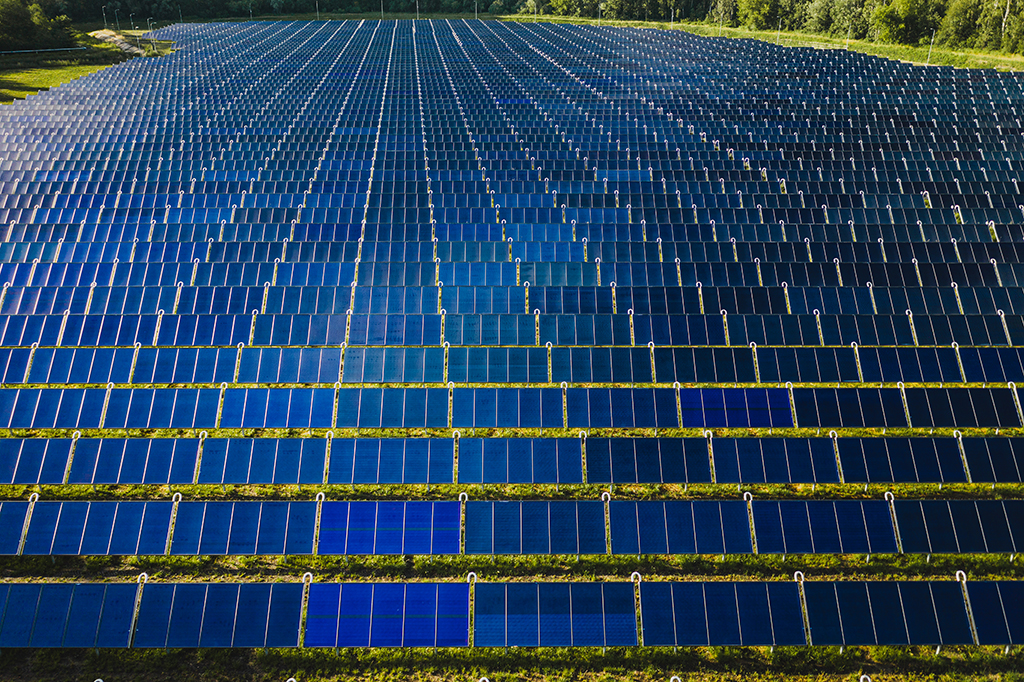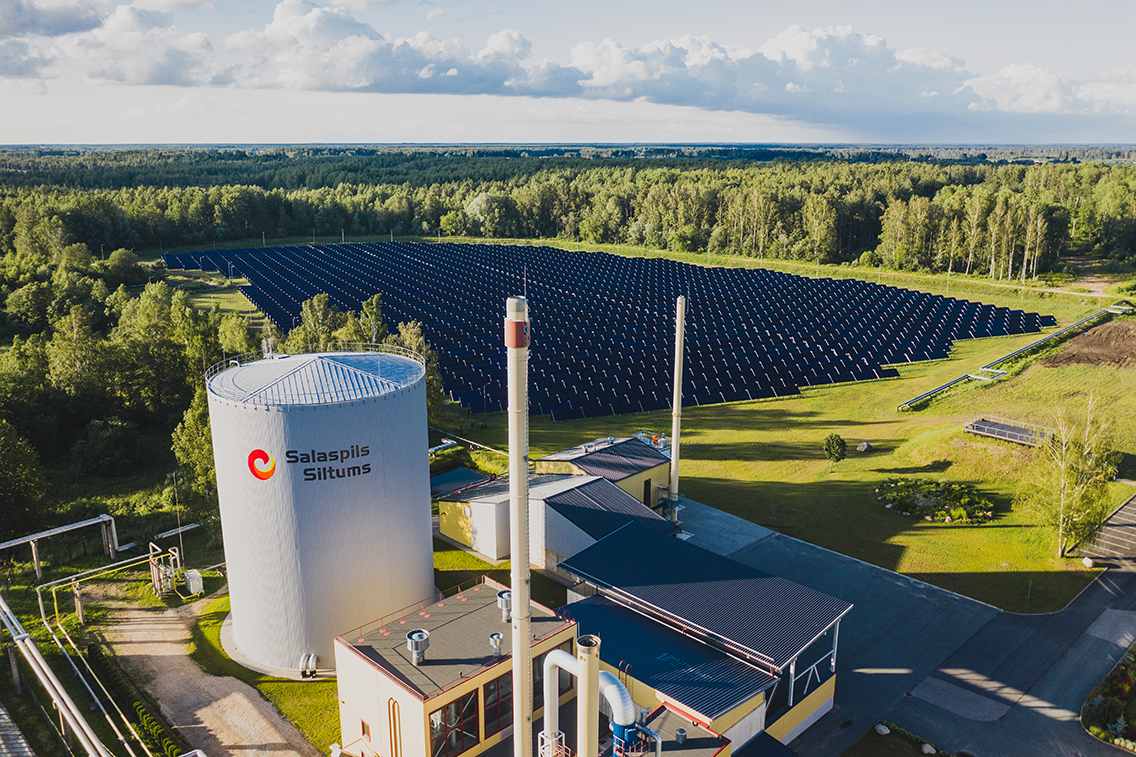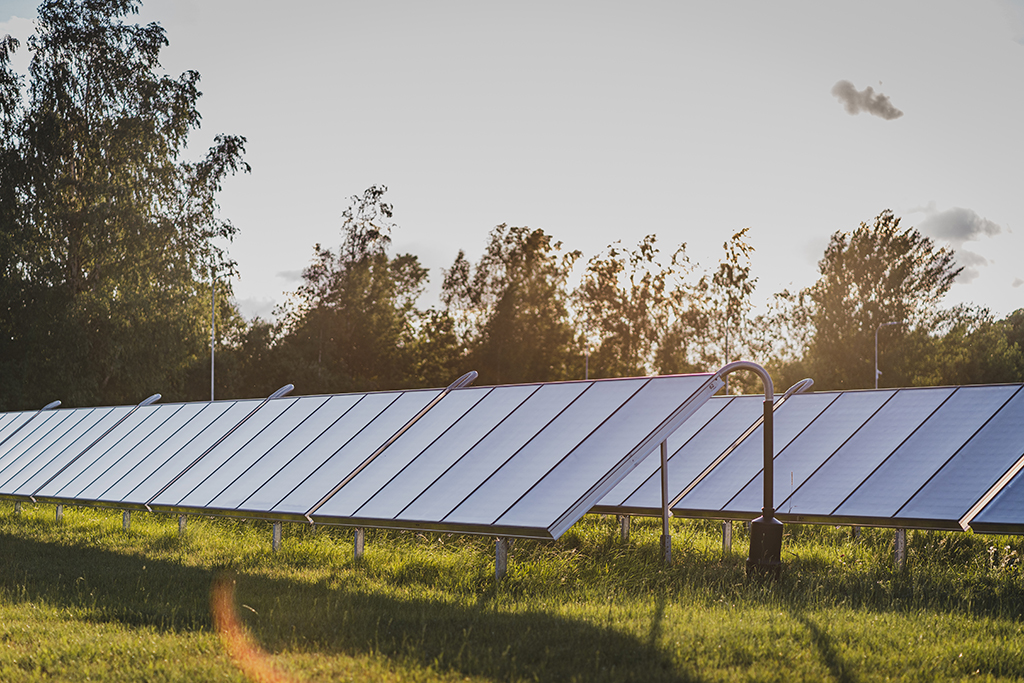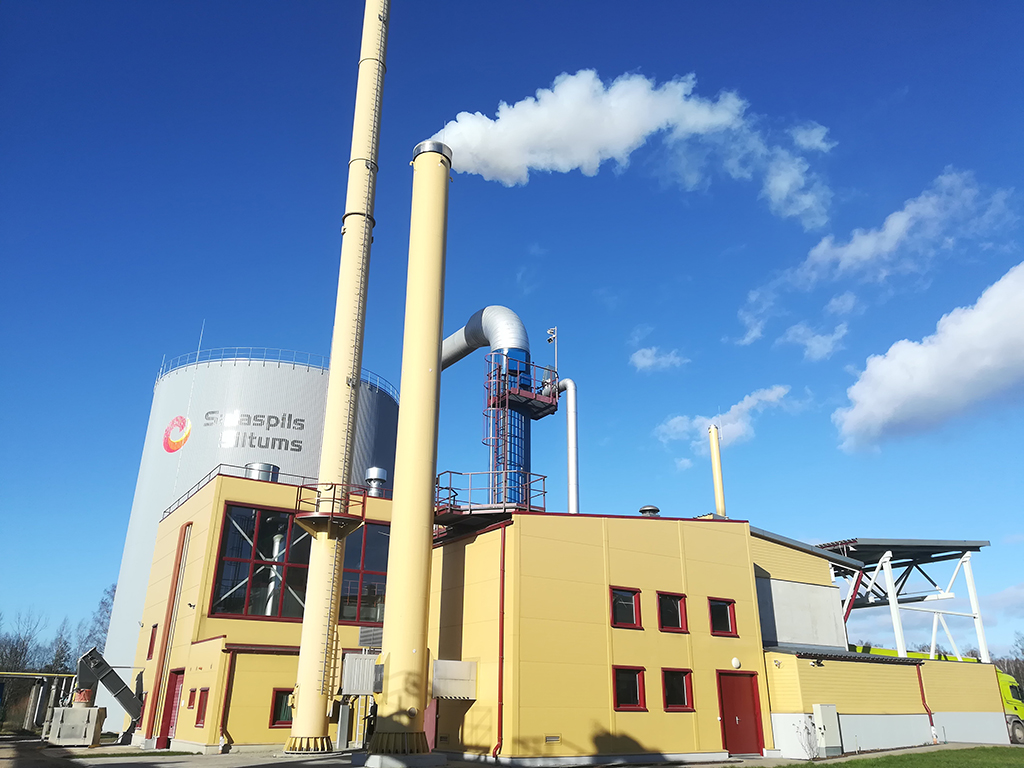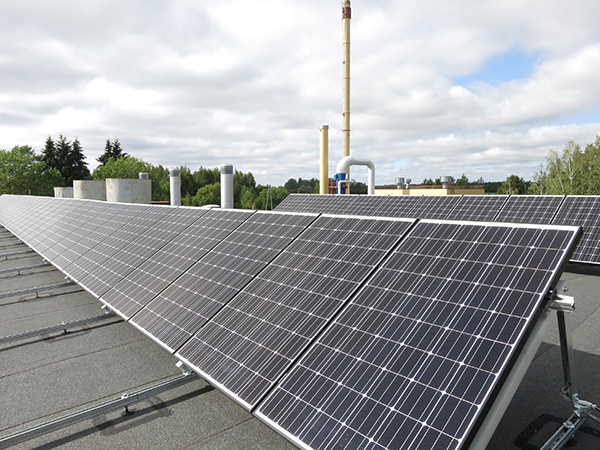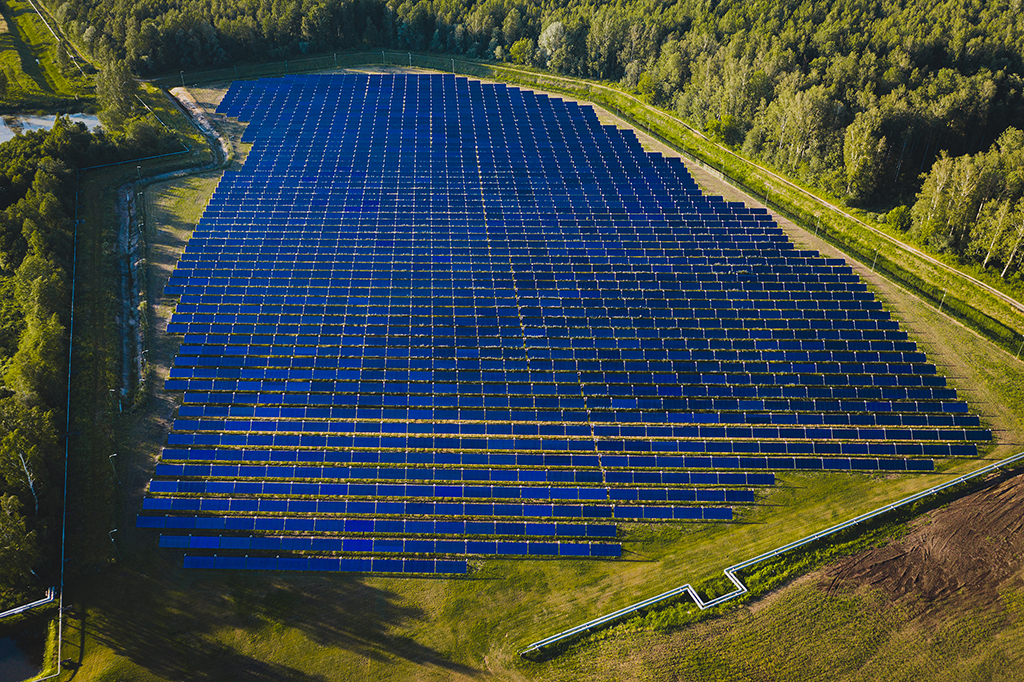Transition to green energy in DH
Basic information
Project Title
Full project title
Category
Project Description
Solar energy in district heating is not the future, it has been being our daily life for more than one year already. Solar energy as a fraction of 90% of renewables in energy production is now not just a number, it is also the heat that warms Salaspils residents. First solar collector field for district heating in Latvia and the largest one in Eastern Europe - these are our first ambitious steps to achieve climate goal - zero CO2 emissions.
Project Region
EU Programme or fund
Which funds
Other Funds
European Union Cohesion co-financing was contributed within the project 'Promote energy efficiency and the use of local RES in district heating
(Round 1)'. The funding was granted to 'Salaspils Siltums' project already in the realization stage in amount of EUR 2.70 million (40% of total capital costs) in the year 2018.
Description of the project
Summary
The project implemented in Salaspils is a successful example of how Latvian cities, by attracting co-financing from EU funds, can modernize their heat supply systems in order to reduce the consumption of fossil fuels and provide citizens with more environmentally friendly heat energy and a cleaner environment. As a result of this project, Salaspils has managed to become the first city in Latvia where solar energy is used in a district heating system. What is more, it is also one of the largest solar district heating systems in Eastern Europe.
Within the project 1 720 solar collectors with a total active area of 21 672 m2 were installed, an 8000 m3 accumulation tank and a new wood chip boiler house with a total capacity of 3 MW, equipped with a flue gas condenser, were built. The fraction of renewables has accelerated up to 90%, from which 20% is achieved by means of solar energy, thus considerably reducing CO2, NOx and other harmful emissions into the atmosphere.
The project was brought to life in cooperation with ‘Arcon-Sunmark’, Danish manufacturer of solar thermal devices. Active project implementation works had been continuing for 2 years until the solar field produced its first units of energy in September 2019. Now solar energy is a primary energy resource, which ‘Salaspils Siltums’ is trying to use to the maximum. When the energy of the sun is insufficient, we produce heat with a wood chip boiler, which has a condenser installed, that provides heat recovery from flue gases. 28 meters high storage tank ensures the accumulation of surplus heat for several days in order to use it at night and on rainy days.
This is the only solar thermal energy park of its kind in Latvia so far, and since the beginning of the project, heating companies from other cities have also been actively interested in it.
Key objectives for sustainability
The prerequisites for the start of the project began long before its implementation, when the specialists of Salaspils Siltums decided that the company needed modernization and gradually began to study the topic of renewable energy sources. The main goal was to partially transition from natural gas to zero emission energy sources. It was decided to integrate solar panels to cover the summer hot water load. There were 1720 solar panels together with the 8000 m3 storage tank installed, and a new 3 MW wood chip boiler house equipped with a flue gas condenser was constructed.
The storage tank is designed to store heat during the daytime when the sun is more active and use it later when solar energy is not available, thus, increasing the collectors’ efficiency. A conservation of surplus heat is essential for flexibility in the energy system in order to avoid extra fuel incineration for heat production.
Thanks to the use of a wood chip boiler house, energy efficiency increased and heat losses went down. Production efficiency factor now reaches 95%. Flue gas condenser makes it possible to reuse the heat before it comes out of chimneys together with the flue gases, as well as prevents the deleterious particles from entering the atmosphere.
Approximately 12,000 MW of heat are produced using solar energy per year. Using collectors, it is possible to heat the carrier to temperatures up to 90°C. In cloudy weather, the temperature could reach about 70°C. This is enough to provide all the customers with domestic hot water, so in the summer season there is no other energy resource needed.
Furthermore, there were 86 solar PV panels with a total capacity of 25 kWh installed on the top of the administration building in order to produce electricity for own needs. Thus, more than 406 tons of CO2 were prevented from being released into the air.
Key objectives for aesthetics and quality
The implementation of this project has brought us to a new level of development. Now we have turned from an ordinary boiler house into something like a scientific exhibition. Many interviews and conferences are held against the backdrop of the solar collector field. Students come to shoot videos campaigning for admission to technical programs, referring to our innovative technologies. In this way we arouse the interest of people, who are not yet involved in the energy sector. Now it is welcomed not only in terms of technology - it has become a part of modern culture and technical aesthetics.
Key objectives for inclusion
The implementation of the solar project is a first essential step towards achieving the goal of an European climate-neutral policy.
At the moment we are providing 85% of Salaspils residents with district heating – it is about 17 000 people. In this way, all these consumers became adherents of the friendly nature of energy, without making an effort to do so.
‘Salaspils Siltums’ will not stop at the achieved level of fuel diversification. This is a great way to maintain stability in case some of the energy sources are temporarily unavailable. We continue to expand our network, at the same time exploring new renewable, innocuous energy sources. Our main goal is to completely eliminate fossil fuels in production over time. This is our contribution to sustainable development and fulfillment of duty in accordance with The European Green Deal.
Results in relation to category
The successful result of the pilot project of PV panels’ installation on the roof for electricity production has motivated us to move forward and integrate solar energy in heat production as well. 1 720 large-scale flat plate collector panels, of 12.5 m2 each, were manufactured and delivered by 'Arcon-Sunmark', a Danish supplier of solar thermal devices. Panels have a foil between the glass cover and absorber to reduce convection losses. Solar collectors are made of materials that can then be 99% recycled. The panel serves for more than 30 years without significantly reducing efficiency. Danish colleagues delivered the steel mounting system, the piping for the solar field, the glycol and the control unit.
The main responsibility of installation of the accumulation tank and wood-chip boiler, together with combination of the new heat supply structure with the old one, laid on the shoulders of 'Filter' - a heating and cooling company based in Latvia. An agreement about the regular inspections and maintenance of the new system was concluded as well, so that the supply of the city with environmentally friendly heat is uninterrupted and stable.
In this way one of the largest solar district heating systems in Eastern Europe - 1 720 solar collectors with a total active area of 21 672 square meters have been installed on an area of six hectares.
How Citizens benefit
The main benefit, that has affected customers directly, was the reduction of heat tariff for 12,7%. This allowed the tariff to no longer be dependent on fluctuating natural gas prices on the market. It brought us more stability and independence. This has to some extent influenced the citizens' activity in connecting to centralized heating provided by ‘Salaspils Siltums’ and thus, accordingly, their transition to green energy together with us.
We have been sharing information about the main principles of the project, its benefits for society and positive impact on the environment on our webpage, via social networks and mass media. In this way we are happy to share our green thinking, and we have possibly pushed somebody to similar innovative decisions.
Innovative character
If until now solar energy panels for water heating were more common in private houses, then in Salaspils they are used for the first time in district heating. As a result of this project, Salaspils has managed to become the first city in Latvia where solar energy is used in such wide scope. What is more, it is also one of the largest solar district heating systems in Eastern Europe. It is a story both about daring to create an idea and developing it, and at the same time - about successful and skillful project management, because the planned work is completed before the start of the heating season.
Being the pioneers in utilizing solar energy for DH in Eastern Europe imposes a certain responsibility, as henceforth “Salaspils Siltums” becomes an example for other energy providers and is eager to share its experience.
We have proven that our country has a huge potential for the widescale adoption of such renewable heat sources due to the large amount of free space for installing collectors on the outskirts of cities. Incredible assistance renders the exchange of experience with European partners possible, since only the open idea sharing is a clue to the rapid, productive and complex development.

